Best thermometers for 2021: Here’s what to use to take your temperature at home
We’ve got some good news: The best thermometers are a lot easier to track down now than they were a year ago.
At the start of the COVID-19 pandemic, a run on home medical thermometers led to many top models selling out at online retailers. But supplies have now returned for most models and you’ll have better luck finding one of the best thermometers these days.
The best thermometers let you take the temperature of anyone in your home. You’ll learn whether you need to seek a doctor’s care or can safely wait for the fever to break. And you’ll want a thermometer that’s fast, accurate and easy to use.
When shopping for the best thermometers, you’ll generally find two categories — digital stick and infrared. (The old glass thermometers containing mercury have been phased out for safety reasons, but you can still find a few alcohol-based ones with dyed-red fluid inside.)
The digital-stick kind is what you’ve likely kept stashed in the back of your medicine cabinet for the last decade. It can take temperatures from the mouth (oral), the armpit (axillary) or the bottom (rectal).
Digital-stick thermometers are a little bit slower than their infrared counterparts and tend to have fewer features, but they’re accurate, affordable and work for all ages.
Infrared thermometers measure the heat your body emits, generally via the forehead or ear. These devices give results almost instantaneously and are more comfortable for kids, though they’re generally not recommended for newborns. (Readings from a rectal thermometer are more reliable, and with babies, reliable readings are key.)
Infrared thermometers tend to have more features than digital-stick models, which means they’re also pricier.
We compared pricing, features, speed and accuracy to find the best thermometers. Here’s what we discovered.
What are the best thermometers?
Of the thermometers we considered, for most people we recommend the iProven DMT-489, a dual-mode infrared thermometer that takes fast, accurate readings from either the forehead or ear.
We also think the Vicks ComfortFlex, a basic digital stick thermometer that can be used for oral, rectal or underarm (axillary) temperature, is one of the best thermometers, since it’s a great option for infants and adults alike. The Chooseen Digital Forehead and Ear Thermometer also wins points for its flexibility.
For smart device enthusiasts, the Kinsa Smart Ear syncs to an iOS or Android app on your phone for tracking your family members’ health histories. The thermometer alerts you when you should seek out medical care.
For parents who want to monitor fevers through the night, the Elepho eTherm offers instant readings and can work with foreheads as well as ears.
Of course, the best thermometer for you depends on how you prefer to take temperatures. The American Academy of Pediatrics recommends rectal readings for infants under 3 months of age, and this is also the most accurate method for kids up to age 3.
Older children and adults may prefer ear or forehead scans, though they can also get good readings from basic digital stick thermometers that take temperatures orally.
The best thermometers you can buy

Many infrared thermometers measure temperature on the forehead or in the ear, but not both. The iProven DMT-489 is a dual-mode device that lets you switch between the two as needed, depending on what you or your kids prefer. It’s nice to have the option, even if you generally stick to one mode or the other.
The iProven works quickly: testers found results were nearly instantaneous in the ear and measured less than 3 seconds on the forehead — and temperatures were reasonably accurate when compared with other devices. Plus, the iProven has a backlit display that turns one of four colors depending on fever level.
The only downside? You can’t turn off the audible alert, so even if you were able to get a forehead reading on a sleeping kid, the beeping would likely wake them up. Still, the iProven has enough flexibility to make it our pick for the best thermometer.
As of June 2021, shipments of the iProven DMT-489 are delayed, so many stores will be temporarily out of stock. A company representative told us they expected stocks to be replenished by July.
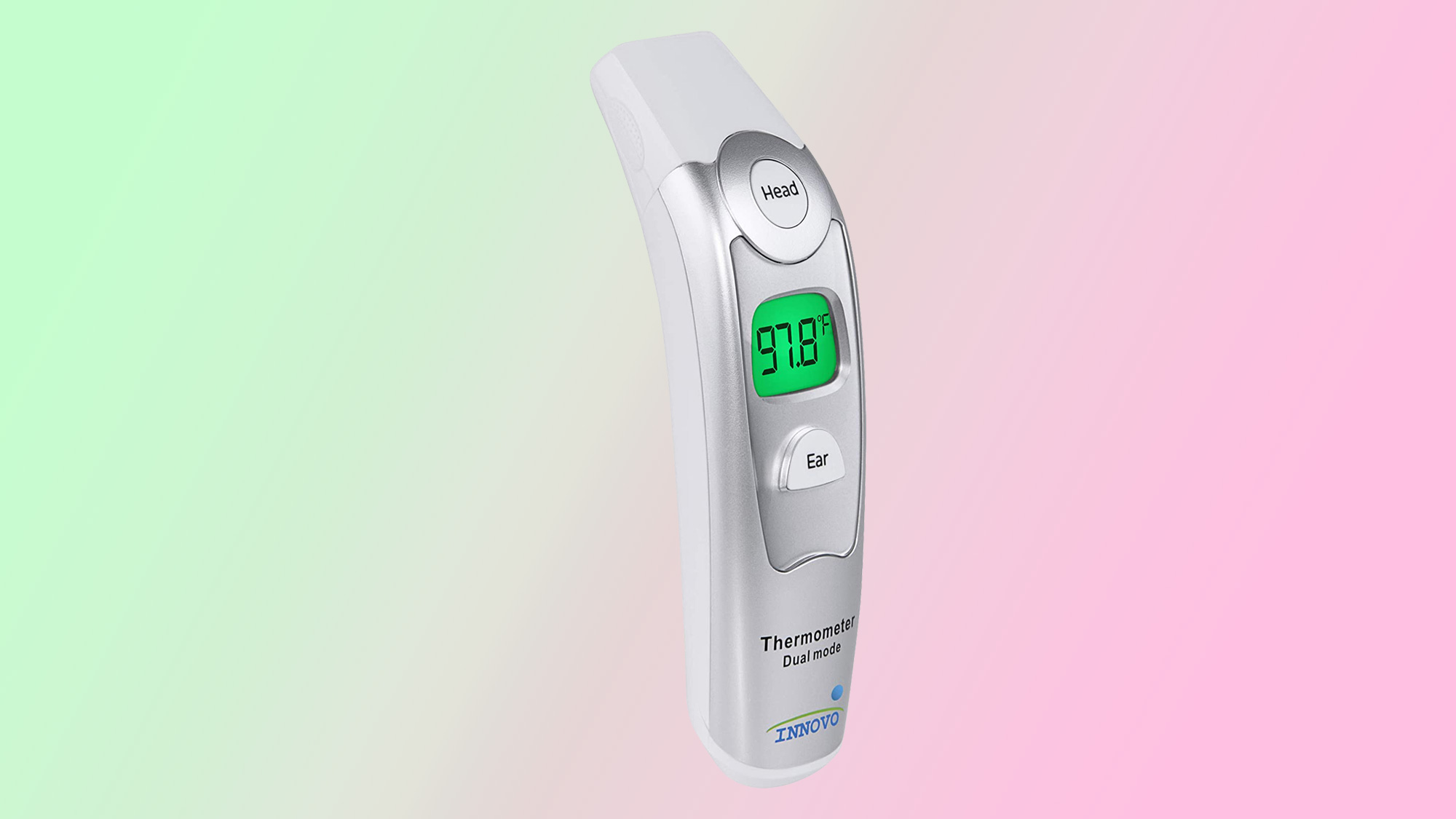
Innovo’s Forehead and Ear thermometer is a fine dual-mode alternative to the iProven. The Innovo thermometer offers fast readings and comes with a backlit display and both a visual and auditory fever alarm.
The newest model has clearly labeled buttons for toggling back and forth between forehead and ear modes. It also stores the last 20 readings so you can track temperatures over time.
Like the iProven, though, the Innovo Forehead and Ear doesn’t have a silent mode, so it’s not perfect for light sleepers. Plus, testers report that the memory storage function isn’t straightforward, and some reviewers say readings can be inconsistent — a not-uncommon concern for infrared devices.
For that reason, we’d recommend the iProven over Innovo’s Forehead and Ear model, though the latter version is a good alternative if the iProven is out of stock. (The Innovo Forehead and Ear thermometer looks like it’s returned to Amazon after being out-of-stock during the start of the coronavirus pandemic.)
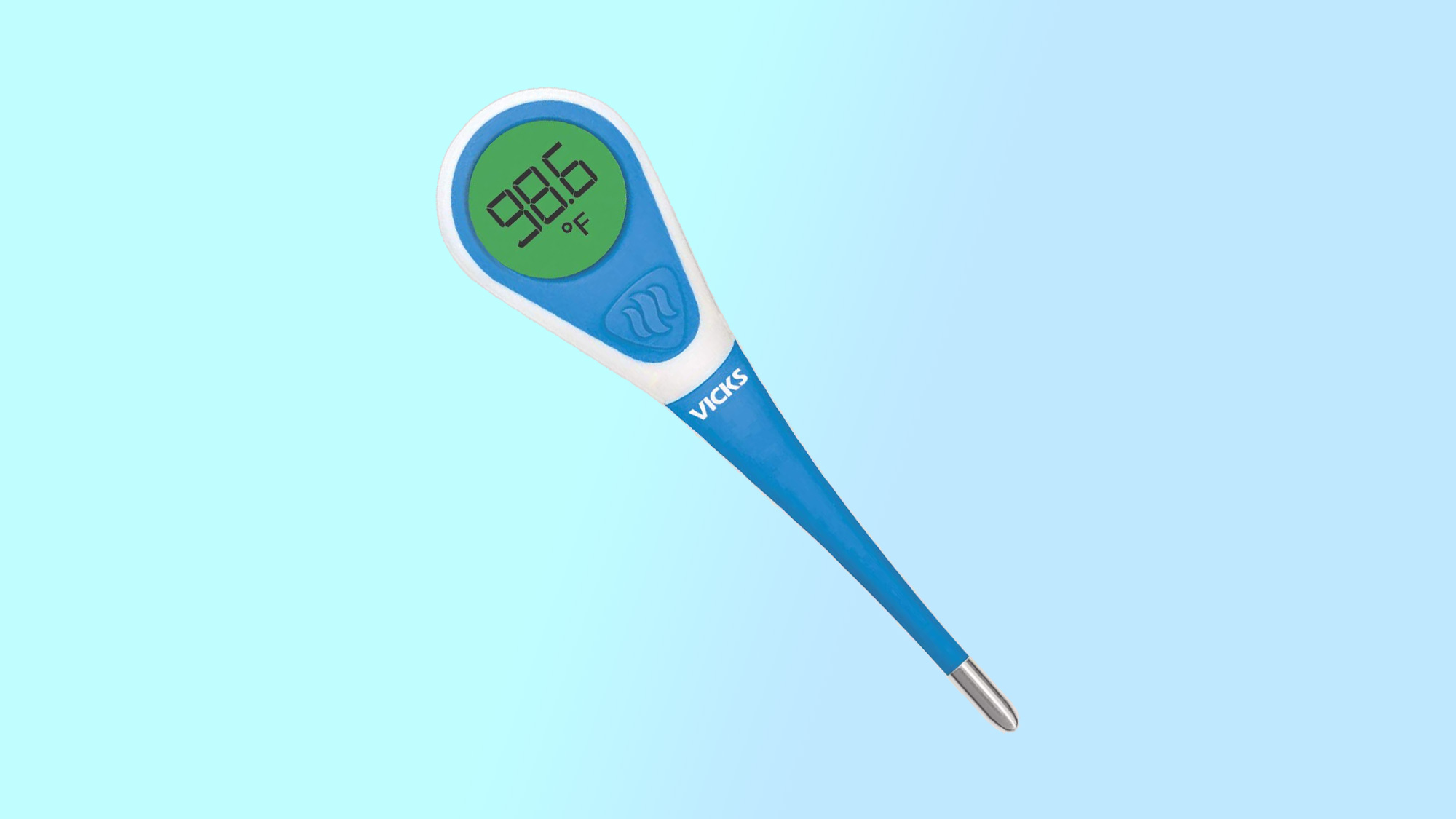
The Vicks ComfortFlex is an affordable at-home thermometer that’s good for every age group — but it’s one of the best thermometers if you have an infant younger than 3 months old.
The American Academy of Pediatrics recommends using rectal temperature for babies, and the same method is ideal for kids up to age 3. The ComfortFlex can also be used for oral or underarm readings for older children or adults. (Be sure to clean the thermometer between uses, or keep one solely for rectal readings.)
Plus, the ComfortFlex has an easy-to-read display that turns green, yellow or red to indicate normal, elevated or fever-level temperatures.
However, this affordability and versatility come with some trade-offs. You’ll have to live with slower results compared with infrared thermometers. The ComfortFlex averaged 8 seconds in Wirecutter tests — faster than similar stick thermometers but not close to the instant results you get with infrared thermometers.
The other downside is a very loud alert that cannot be disabled. If you’re dealing with a sick kid, the incessant beeping may get on everyone’s nerves.
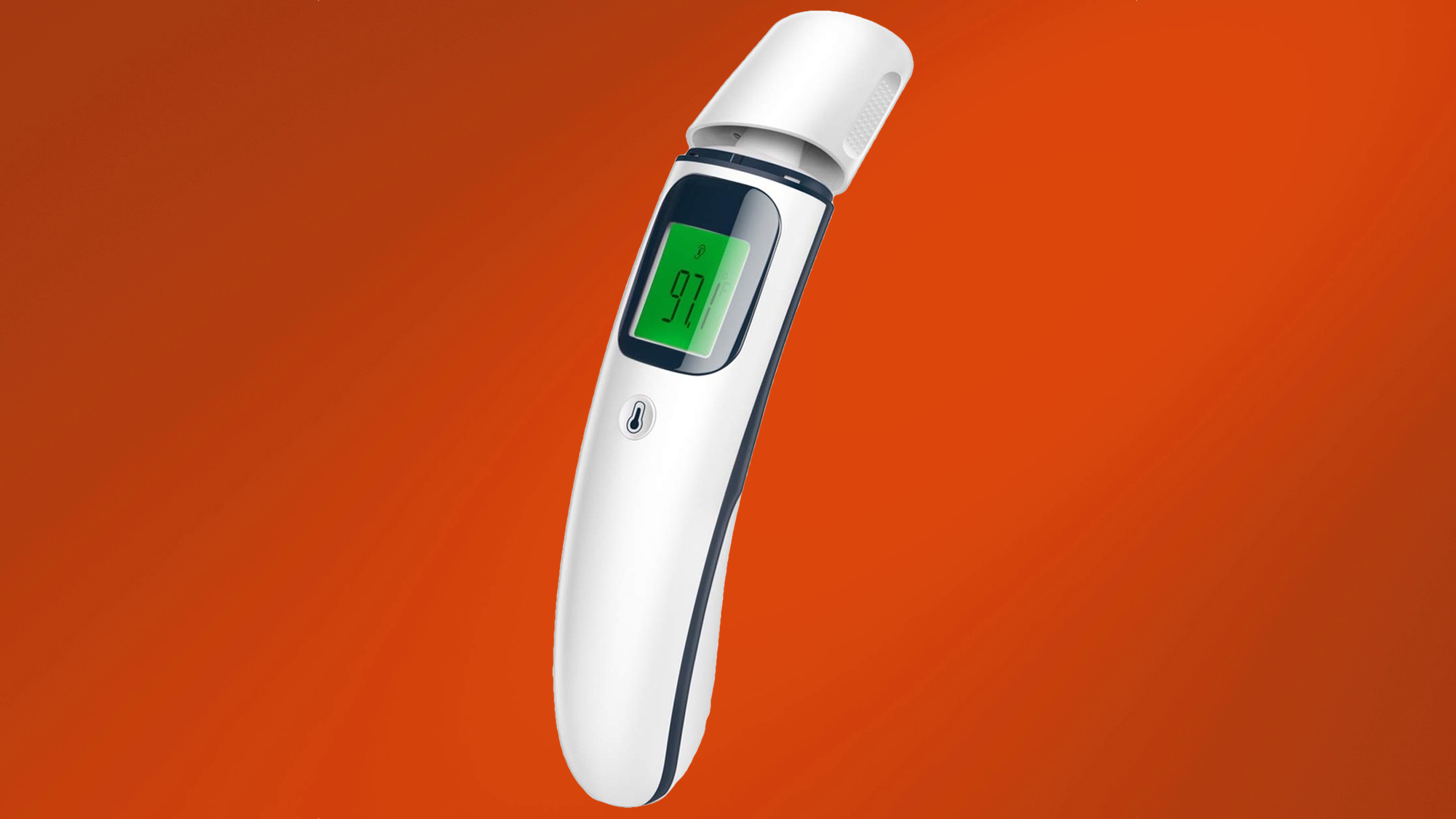
The Chooseen Digital Forehead and Ear Thermometer is the best thermometer to buy if you want a device that any member of the family can use, from parents all the way down to infants. Chooseen’s thermometer can take temperatures from both the ear and the forehead, making this an especially flexible choice.
The display features a fever warning system that helpfully lights up with a visual cue on whether someone’s running a fever or not. A green light means there’s no fever, while orange warns you of a mild fever; a red light flashes if the thermometer detects a high fever.
In addition to taking temperatures for people, Chooseen’s thermometer is also able to measures rooms, objects and liquids (though Chooseen warns not to stick the thermometer directly into liquids to gauge their temperature). The thermometer can store up to 35 temperature readings. Amazon review praise the Chooseen thermometer for accurate readings though warn that some of its beeps are hard to hear.
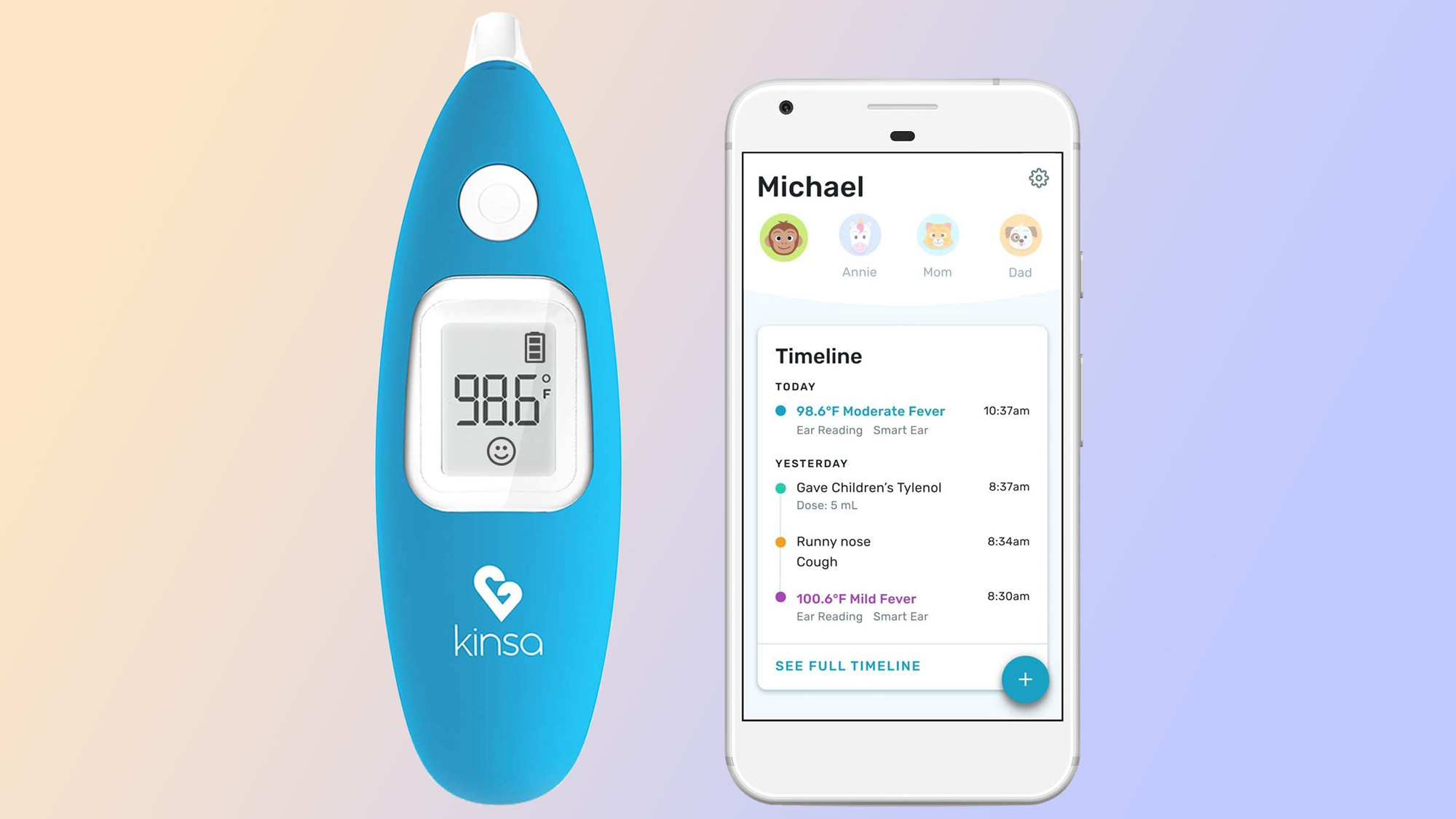
If you want your smart home to extend to your medicine cabinet, try the Kinsa Smart Ear thermometer. This device takes ear readings and syncs them via Bluetooth to the Kinsa app, where you can enter other symptoms and view individual users’ health histories (including medication timing and dosages).
The Android and iOS app also gives personalized health recommendations, including when to call a doctor or head to the emergency room and syncs to Apple Health. And unlike some of Kinsa’s other products, the Smart Ear can be used without app access — just like a normal ear thermometer.
The Kinsa Smart Ear gives nearly instantaneous readings, though like other infrared devices, its accuracy may vary. Plus, it’s pricier than some of the other best thermometers — it’s certainly more expensive than your basic digital stick thermometer. But if you’re looking for an easy way to track your kid’s symptoms, it delivers.
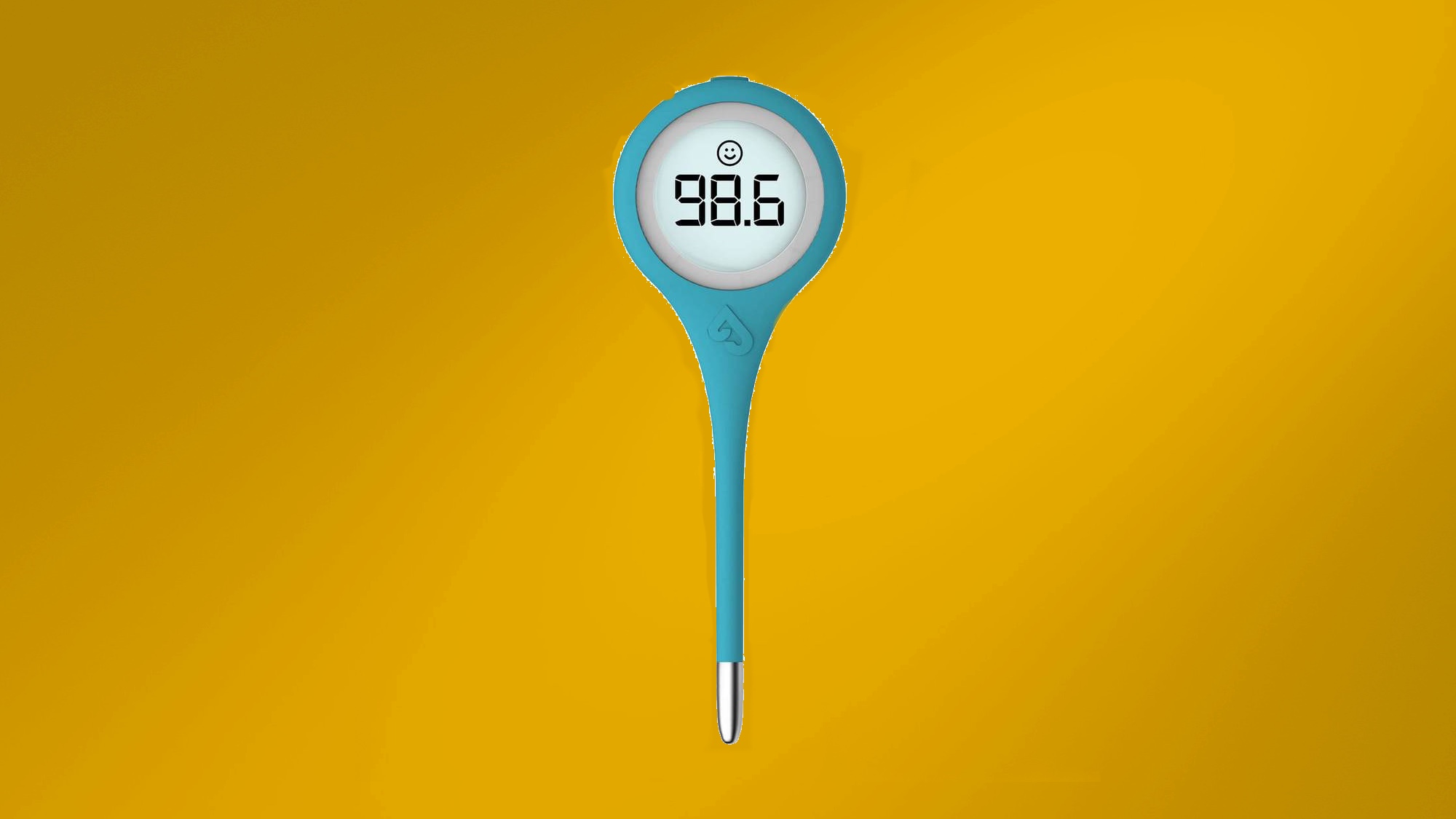
Like the Kinsa Smart Thermometer, the Kinsa QuickCare works with Kinsa’s app to log temperature readings and provide care recommendations. (And you can use this thermometer without the app as well.) But the QuickCare thermometer is less expensive than the Smart Thermometer.
The trade-off is that temperature readings aren’t as instantaneous as they are with the Kinsa Smart Thermometer. The QuickCare takes about 8 seconds to get you a reading. You do get a more flexible thermometer with the Quick Care as it can be used to take oral, underarm or rectal readings. It’s powered by a replaceable CR2032 battery.
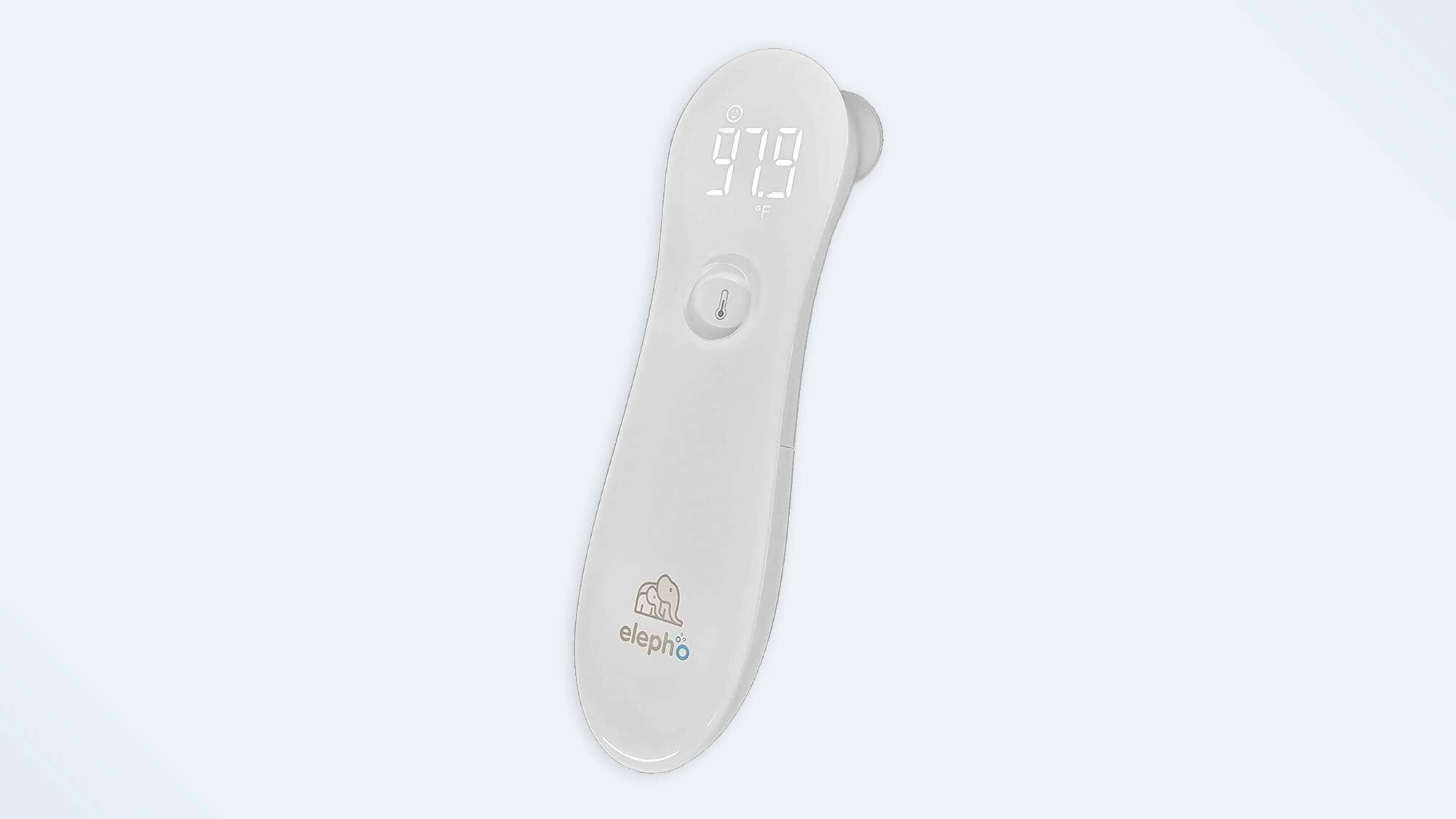
For infrared thermometers, we have been fans of the Braun No-Touch Forehead, but that remains out of stock at many stores. In contrast, the Elepho eTherm is available, and like Braun’s thermometer, it’s all about getting temperature readings quickly and without a fuss.
The Elepho eTherm lets you take temperatures from either the forehead or the ear canal. (Just pop off the cap if you want to measure someone’s temperature from the ear.) That kind of flexibility makes this a welcome thermometer for all members of the family, and the promised 1-second readings in either Fahrenheit or Celsius should provide quick answers on whether someone has a serious fever.
There’s not a lot of bells and whistles to this thermometer — forget about storing recent readings in on-board memory — but it’s a good choice if you just want something that can quickly take a person’s temperature.
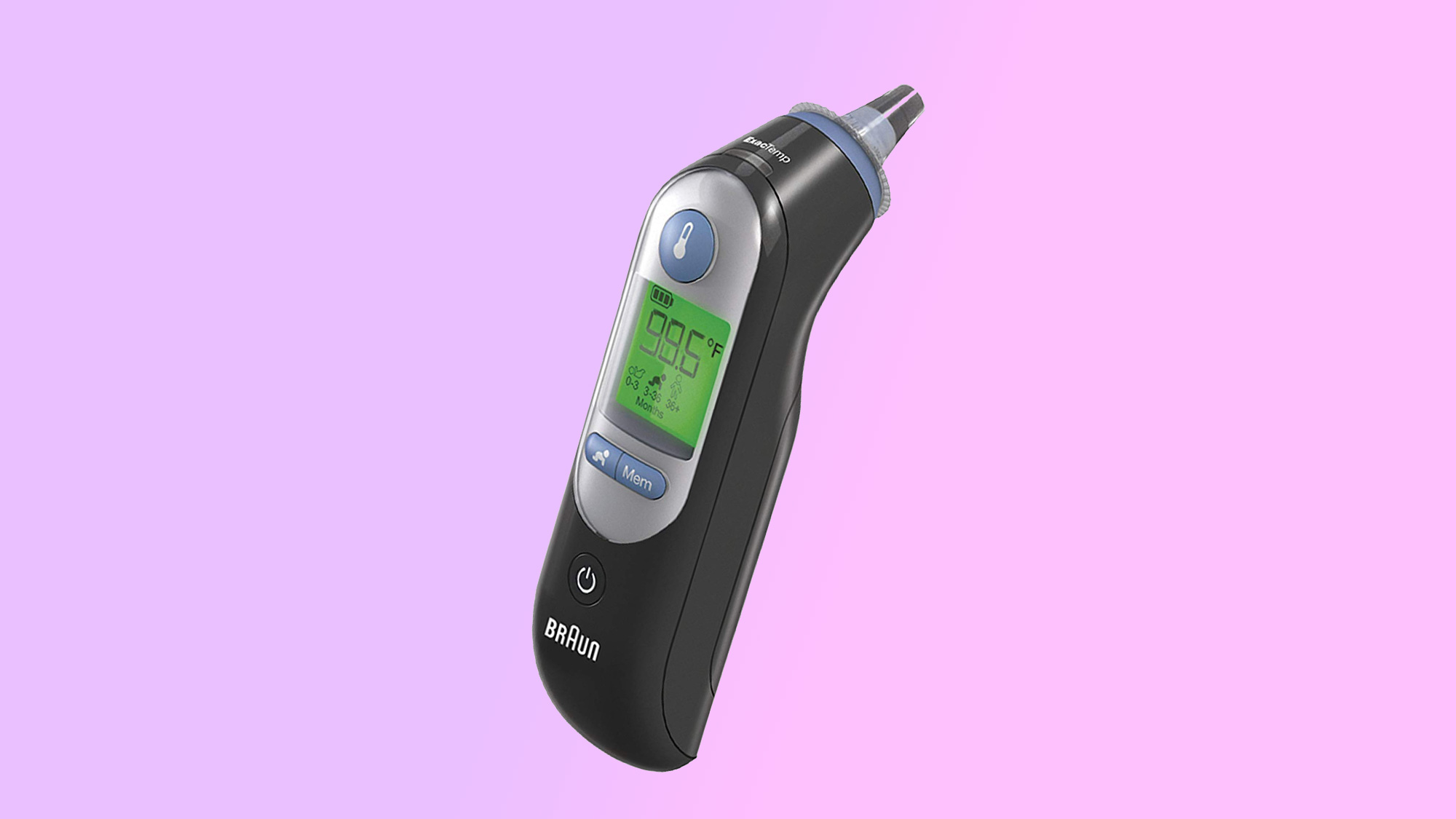
The Braun ThermoScan 7 takes ear temperatures only, but it’s one of the best thermometers if that’s the preferred method for the kids and adults in your home. The ThermoScan allows for fast back-to-back readings and stores the last nine results, which makes tracking temperature over time easy.
One unique feature to the ThermoScan: You can set your child’s age to get personalized fever alerts, as “normal” ranges differ among babies, toddlers and older children. Within each of those presets, you’ll get color-coded results on the large backlit display.
But there’s one major flaw to the ThermoScan 7 — it requires a disposable probe cap. The thermometer won’t read temperatures without one. If you don’t want to deal with a separate part each time you need to use your thermometer, this may be a deal-breaker. That said, this device is generally well-regarded among users.
How to choose the best thermometer for you
When you’re looking for the best thermometer for your home, consider whose temperature you’ll be taking, as well as which features — fever alerts and app integrations, for example — could make dealing with a sick kid or partner a little bit easier.
Your first step to choosing the best thermometer is to determine which method you prefer for taking temperatures. If you have a newborn — or if you’re looking for an inexpensive option for the adults in your home — a digital stick thermometer that can be used for oral, rectal or axillary readings should do the trick.
If you have toddlers or children who are averse to holding their breath, a forehead, ear or dual-mode device is likely a better fit.
Here are a few additional factors to weigh when determining which thermometer is right for your family.
- Display options: Look for thermometers that have large, easy-to-read digital displays. A backlight is helpful if you’ll be taking temperatures at night in dark bedrooms.
- Fever alerts: Many of the devices we reviewed have color-coded (usually red, yellow or green) displays to indicate that you have a fever or your child does. This helps you quickly identify elevated temperatures.
- Silent mode: A few devices let you silence beeps and alerts, which is helpful if you’re dealing with sick, cranky or sleeping kids who may be bothered by unnecessary noise.
- Memory storage: Most thermometers retain at least one recent reading — a helpful option if you want to track a fever over time.
- Age-specific settings or smart features: These are more nice-to-haves than necessities, but app syncing and custom fever alerts by age add some ease to your temperature-taking process.
Finally, your choice likely depends on how much you want to spend. Infrared thermometers with more features are, predictably, more expensive than your basic digital stick version.
For all the latest Technology News Click Here
For the latest news and updates, follow us on Google News.
